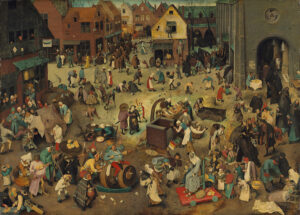
Bruegel’s “Fight Between Carnival and Lent”
During the past five years The Sophia Institute Press has published three cookbooks, The Vatican Cookbook (2016, $34.95), Cooking with the Saints (April 2019, $34.95), and The Vatican Christmas Cookbook (September, 2020, $34.95). I’ve reviewed all three for Epicurean-Traveler.com: “Vatican Recipes” in June 2018; “The Vatican Christmas Cookbook” in November 2020; and “Cooking with the Saints” in August 2021. The recipes in the Vatican cookbooks are by retired Swiss Guard David Geisser.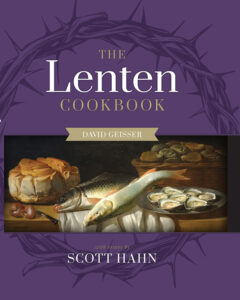
On January 25th Sophia Institute Press released a fourth cookbook entitled The Lenten Cookbook (224 pages, $29.95). Like the Vatican books, its 75 new international recipes, are also Geisser’s creations. Again they are photographed by Roy Matter, a frequent collaborator behind the lens for Geisser, but also in the chef’s kitchen. ![]() For those who haven’t seen my earlier reviews, Geisser, born and raised in the Wetzikon District of Zurich, was already an accomplished young chef and published author when he enlisted in the Pontifical Swiss Guards in 2013. As the The Lenten Cookbook’s author’s blurb recounts, “today David is one of the leading chefs in Switzerland, author or co-author of seven cookbooks in German, host of his own TV show, and the founder and leader of David Geisser Cooking Studio. David and his wife, Selina, reside in Zurich.”
For those who haven’t seen my earlier reviews, Geisser, born and raised in the Wetzikon District of Zurich, was already an accomplished young chef and published author when he enlisted in the Pontifical Swiss Guards in 2013. As the The Lenten Cookbook’s author’s blurb recounts, “today David is one of the leading chefs in Switzerland, author or co-author of seven cookbooks in German, host of his own TV show, and the founder and leader of David Geisser Cooking Studio. David and his wife, Selina, reside in Zurich.”
On his personal website, Geisser says: “Passion is the Leitmotiv that guides my work. Be it passion for all things culinary or a passion for people—I believe that putting your lifeblood into what you do is the key to success.”
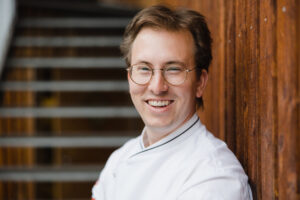
David Geisser
“The Lenten Cookbook is much more than a cookbook”, Sarah Lemieux, the Press’s Associate Director of Publicity, e-mailed last Fall. “It’s the first-ever guidebook for mealtimes during Lent (the forty days from Ash Wednesday to Easter Sunday) and features essays by the acclaimed Biblical scholar, public speaker, and teacher Scott Hahn, who’s publishing his first collaboration with the Institute.”
A Presbyterian who converted to Catholicism at Easter in 1986, as his author’s blurb recounts, “Dr. Hahn’s talks have been effective in helping thousands of Protestants like himself once, and many non-practicing Catholics to (re)embrace the Catholic faith. His numerous best selling books include The Lamb’s Supper (a key to understanding the mysteries of the Mass), Reasons to Believe, Rome Sweet Home (co-authored with his wife Kimberley, it describes the process of their conversions), The Creed (a history of Christianity and why the Judeans, Persians, and Romans saw it as a threat to social order), Evangelizing Catholics, and Angels and Saints.
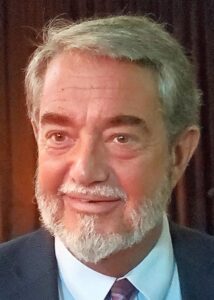
Scott Hahn
Since 1990 Hahn holds the Father Michael Scanlan, TOR, Chair of Biblical Theology and New Evangelization at the Franciscan University in Steubenville, Ohio, across the Ohio River, some thirty miles from Pittsburgh. In 2014 Francis Cardinal George appointed him to the newly-established McEssy Distinguished Visiting Professorship in Biblical Theology at Mundelein Seminary in Chicago. Of his five sons, Joseph and Jeremiah are seminarians.
Hahn’s Lenten Cookbook essays (“The Joy of Fasting: An Introduction” which includes fasting’s history even before Christianity), “Fasting in Modern Practice”, “Lent”, and “Fasting Through the Year”) reflect on the history of fasting and fasting’s integral role in the reader’s spiritual growth. “Hahn guides you”,” continued Lemieux’s e-mail, “on how to practice a holy Lent that will enable you to return your focus to Christ, and to carry the unique and extraordinary joys of Lent forward into the rest of the year. You’ll also learn of forgotten Catholic traditions and timeless customs, such as St. Martin’s Lent, Ember Days, and Rogation Days, and how you can apply these time-honored periods of grace to your spiritual life today.”
In case you’ve forgotten “St. Martin’s Lent” or “Christmas Fast” as St. Francis of Assisi called it, lasts from St. Martin’s Fest Day (November 12) until Christmas Day. Traditionally “Ember Days” comprise the Wednesday, Friday and Saturday following St. Lucy’s Day (December 13), the first Sunday in Lent, Pentecost, and Holy Cross Day (September 14). “Rogation Days” are festival days devoted to special prayers for crops on April 25 and the three days before Ascension.
Hahn’s essays are followed by a page about the strictest Lenten diet, “The Black Fast”, which allows only one meal a day (without meat, eggs, butter, cheese, milk or wine after sunset and during Holy Week only of bread, salt, herbs and water), “The Traditional Fasting Substitution List” and an “Index of Recipes for Traditional Fasting”. Then come Geisser’s recipes divided into Breakfast, Soup, Salads, Collations or Small Meals, Main Dishes which include pasta, fish, vegetables, several Quiche and vegetable and seafood curries, ending with Breads and Hot Cross Buns which are traditionally eaten on Good Friday. As to their origin, it seems that Br. Thomas Rocliffe, a 14th-century monk at St. Alban’s Abbey in England, first baked buns, etching a cross on their tops, to distribute to the poor on Good Friday. Their raisins symbolize the spices used to embalm Christ’s body for burial. For obvious reasons Geisser did not recipes for desserts.
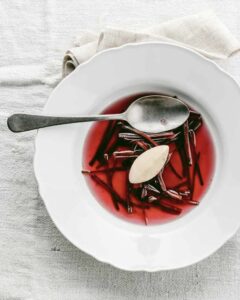
Soup: Beet Broth with Curd Dumplings

Breakfast: Baked Muesli
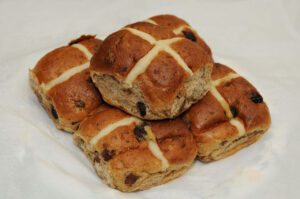
Hot Cross Buns
Much earlier, in 2001, the Institute published Maria Augusta Von Trapp’s (of The Sound of Music family) Around the Year, a charming volume in which she describes the Christian traditions year-round that she loved. It’s available, like all the Institute’s numerous titles, from www.sophiainstitutepress.com with Cooking with the Saints for $54.99 or by itself for $29.95.
